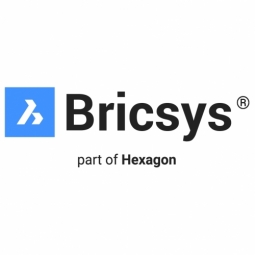适用行业
- 水泥
- 建筑与基础设施
适用功能
- 维护
用例
- 施工管理
- 施工现场监控
服务
- 培训
关于客户
埃文斯应用科学大学是一所提供各个领域广泛学习课程的机构。该大学参与了分布在三个城市的多个建设项目。这些项目范围从小型翻修到全面开发和新建。该大学最初依赖其建筑师的 Bricsys 24/7 环境来管理其新建筑项目。然而,他们决定实施自己的 Bricsys 24/7 环境来独立管理所有项目文档。
挑战
Avans 应用科学大学需要一个用户友好、高效且可扩展的解决方案来管理他们的项目文档。最初,他们使用建筑师提供的 Bricsys 24/7 环境来管理他们的新建筑项目。然而,他们意识到他们过于依赖一方来管理他们的所有项目文档。他们想要一个解决方案,让他们拥有自己的环境来管理他们的项目文档。此外,他们正在寻找一种可以随着他们的需求而增长的解决方案,因为他们有 15 个建筑项目分布在 3 个城市,其中 6 到 7 个是活跃项目。
解决方案
阿文斯大学决定实施他们自己的 Bricsys 24/7 环境。他们从最小的订阅开始,建立了清晰的文件夹结构以及其案例中项目附带的所有角色。事实证明,该解决方案非常用户友好且不言自明,无需任何培训。该解决方案的数据存储容量也能够随着他们的需求而增长。他们找到了最适合自己需求的逻辑布局,并将其用作每个新项目的模板。他们在所有建设项目中都使用 Bricsys 24/7,从小型翻修到完整开发和新建。他们将其用于各种文件,例如 .dwg、.pdf、.ifc,并在 Bricsys 24/7 中组织其他内容,例如邮件、通知和修订管理。
运营影响
数量效益

Case Study missing?
Start adding your own!
Register with your work email and create a new case study profile for your business.
相关案例.

Case Study
System 800xA at Indian Cement Plants
Chettinad Cement recognized that further efficiencies could be achieved in its cement manufacturing process. It looked to investing in comprehensive operational and control technologies to manage and derive productivity and energy efficiency gains from the assets on Line 2, their second plant in India.

Case Study
IoT System for Tunnel Construction
The Zenitaka Corporation ('Zenitaka') has two major business areas: its architectural business focuses on structures such as government buildings, office buildings, and commercial facilities, while its civil engineering business is targeted at structures such as tunnels, bridges and dams. Within these areas, there presented two issues that have always persisted in regard to the construction of mountain tunnels. These issues are 'improving safety" and "reducing energy consumption". Mountain tunnels construction requires a massive amount of electricity. This is because there are many kinds of electrical equipment being used day and night, including construction machinery, construction lighting, and ventilating fan. Despite this, the amount of power consumption is generally not tightly managed. In many cases, the exact amount of power consumption is only ascertained when the bill from the power company becomes available. Sometimes, corporations install demand-monitoring equipment to help curb the maximum power demanded. However, even in these cases, the devices only allow the total volume of power consumption to be ascertained, or they may issue warnings to prevent the contracted volume of power from being exceeded. In order to tackle the issue of reducing power consumption, it was first necessary to obtain an accurate breakdown of how much power was being used in each particular area. In other words, we needed to be able to visualize the amount of power being consumed. Safety, was also not being managed very rigorously. Even now, tunnel construction sites often use a 'name label' system for managing entry into the work site. Specifically, red labels with white reverse sides that bear the workers' names on both sides are displayed at the tunnel work site entrance. The workers themselves then flip the name label to the appropriate side when entering or exiting from the work site to indicate whether or not they are working inside the tunnel at any given time. If a worker forgets to flip his or her name label when entering or exiting from the tunnel, management cannot be performed effectively. In order to tackle the challenges mentioned above, Zenitaka decided to build a system that could improve the safety of tunnel construction as well as reduce the amount of power consumed. In other words, this new system would facilitate a clear picture of which workers were working in each location at the mountain tunnel construction site, as well as which processes were being carried out at those respective locations at any given time. The system would maintain the safety of all workers while also carefully controlling the electrical equipment to reduce unnecessary power consumption. Having decided on the concept, our next concern was whether there existed any kind of robust hardware that would not break down at the construction work site, that could move freely in response to changes in the working environment, and that could accurately detect workers and vehicles using radio frequency identification (RFID). Given that this system would involve many components that were new to Zenitaka, we decided to enlist the cooperation of E.I.Sol Co., Ltd. ('E.I.Sol') as our joint development partner, as they had provided us with a highly practical proposal.

Case Study
Splunk Partnership Ties Together Big Data & IoT Services
Splunk was faced with the need to meet emerging customer demands for interfacing IoT projects to its suite of services. The company required an IoT partner that would be able to easily and quickly integrate with its Splunk Enterprise platform, rather than allocating development resources and time to building out an IoT interface and application platform.

Case Study
Bridge monitoring in Hamburg Port
Kattwyk Bridge is used for both rail and road transport, and it has played an important role in the Port of Hamburg since 1973. However, the increasing pressure from traffic requires a monitoring solution. The goal of the project is to assess in real-time the bridge's status and dynamic responses to traffic and lift processes.

Case Study
Bellas Landscaping
Leading landscaping firm serving central Illinois streamlines operations with Samsara’s real-time fleet tracking solution: • 30+ vehicle fleet includes International Terrastar dump trucks and flatbeds, medium- and light-duty pickups from Ford and Chevrolet. Winter fleet includes of snow plows and salters.








